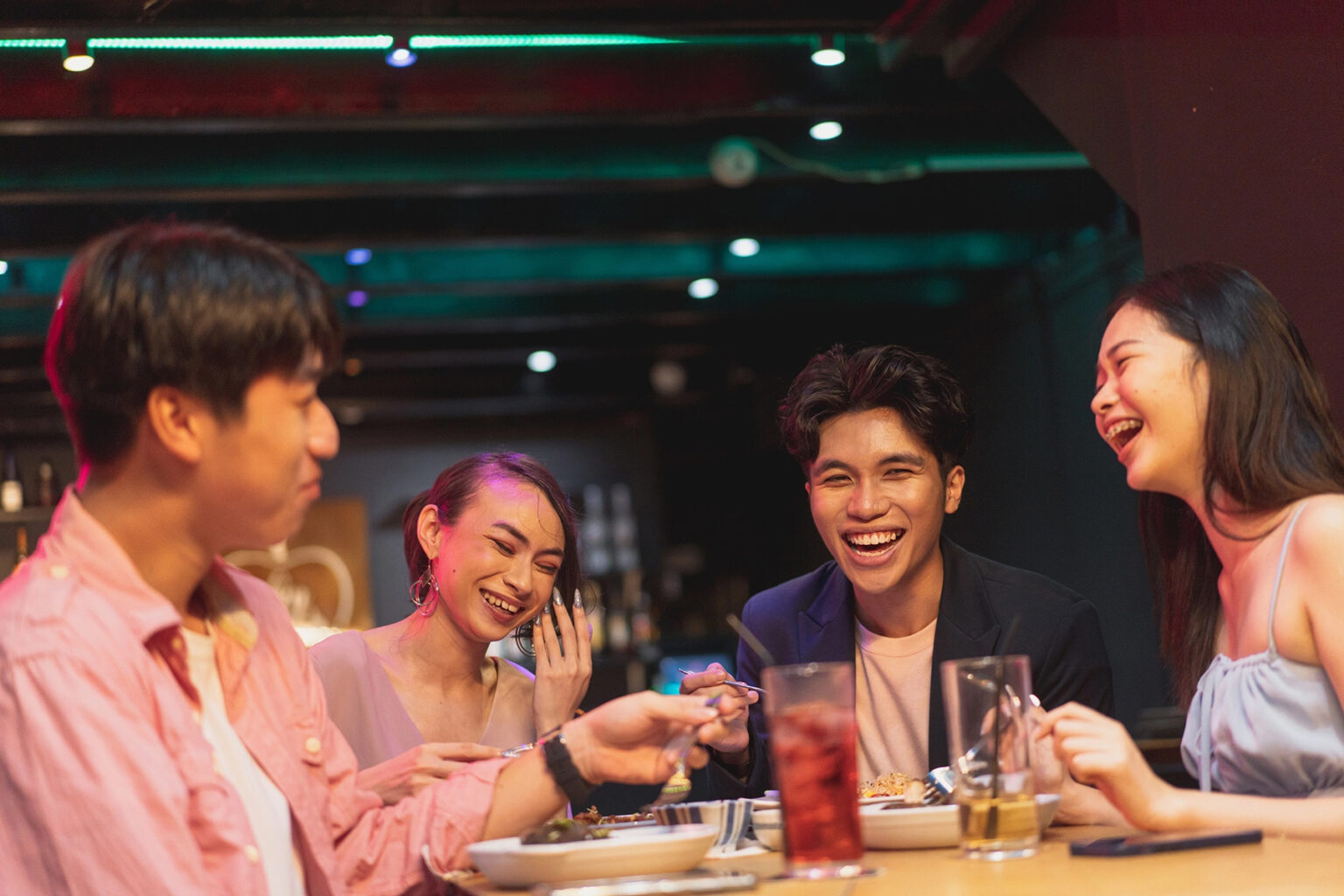
Cultural Etiquette in Singapore
1. Respect and Courtesy
-
Politeness is deeply ingrained in Singaporean culture. The government even launched the National Courtesy Campaign in 1979 to promote kindness and respectful social behavior (source).
-
Always stand on the left side of escalators and walk on the right. This keeps pedestrian flow smooth and is considered common courtesy.
-
Queue patiently—cutting queues is heavily frowned upon in both casual and formal settings.
-
Speak softly in public areas. Loud conversations, especially on public transport, are seen as disruptive. Singapore strictly prohibits spitting, littering, and eating on the MRT.
2. Greetings & Address
-
A handshake is a common greeting in business settings. For men, wait for a woman to extend her hand first.
-
Use respectful terms like “Uncle” or “Aunty” when speaking to elders, even if they're not related.
-
Avoid touching someone’s head or gesturing with your feet. These actions are considered disrespectful in many Asian cultures.
3. Social Norms & Gift Giving
-
When visiting someone’s home, bring a modest gift (like fruit or pastries), and always remove your shoes before entering (VisitSingapore guide).
-
Use both hands when giving or receiving gifts, name cards, or anything formal—it signals appreciation and respect (GuideMeSingapore).
-
During meals, wait for the host to start. Never place chopsticks upright in rice, as it resembles a funeral offering.
4. Dining & Hawker Etiquette
-
Cash is preferred at hawker centres. If you need to reserve a seat, “chope” it by placing a tissue pack or umbrella—this is a well-known local habit.
-
Dishes are commonly shared at meals. Let the host or eldest guest lead.
-
Avoid public displays like yawning, nose-blowing, or picking teeth at the table.
5. Dress & Religious Considerations
-
Dress conservatively when visiting places of worship. Cover shoulders and knees, especially in temples and mosques.
-
Remove your shoes before entering a temple, mosque, or someone’s home.
6. Body Language & Non-Verbal Cues
-
Pointing with your finger is considered rude. Use your whole hand or nod in the direction instead.
-
Heads are regarded as sacred in some cultures—don’t touch a person’s head, even a child’s.
-
Never point your feet at others or rest them on tables and chairs. It’s impolite and unhygienic.
7. Public Behavior & Transport
-
On the MRT and buses, stand aside to let passengers alight before boarding.
-
Offer your seat to the elderly, pregnant women, or those with young children.
-
Don’t eat, drink, chew gum, or play loud music on public transport. These are either discouraged or legally prohibited.
8. Language & Humour
-
English is widely spoken. Singaporeans often use Singlish, a colorful local slang. Trying a few phrases like “lah” or “can or not?” shows effort and friendliness.
-
Use indirect expressions when declining or disagreeing—for example, say “maybe later” instead of “no.”
-
Humour tends to be subtle. Loud, sarcastic, or confrontational jokes may be misunderstood.
9. Festive Traditions (e.g., Chinese New Year)
-
When giving red packets (ang bao), present them with both hands. Avoid amounts with the number 4 (unlucky), and favor 8 (prosperous).
-
If invited to a Chinese New Year meal, join the lo hei (prosperity toss) cheerfully—it’s festive and participatory.
10. Final Thoughts & Tips
-
Be punctual. Showing up late is viewed as inconsiderate in both business and social settings.
-
Carry cash, especially at local eateries, markets, or older establishments.
-
As of July 2023, a mandatory plastic bag charge applies at major supermarkets. Bring reusable bags (NEA Advisory).
-
Singaporeans love food—don’t hesitate to ask locals for recommendations or join in a meal!